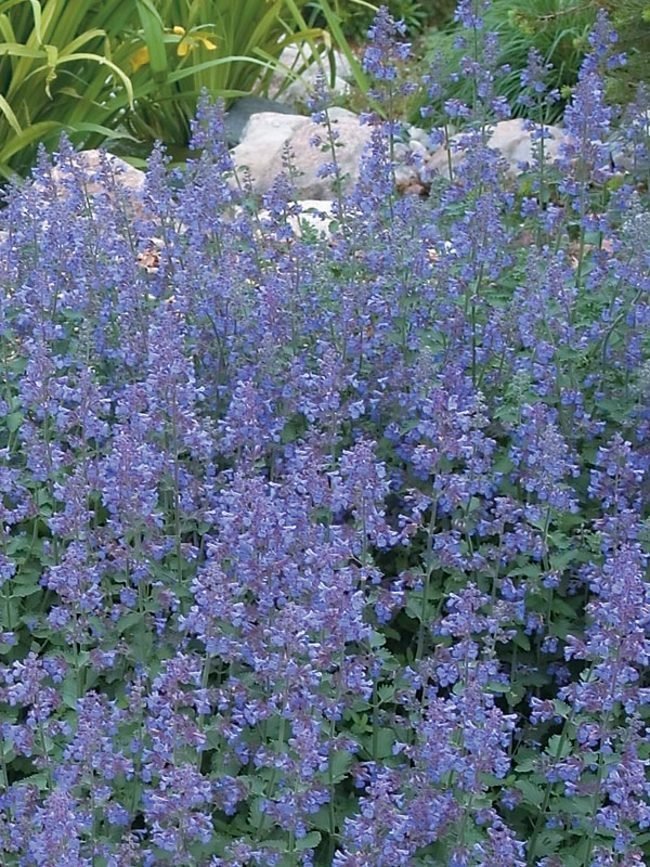 Image 1 of 2
Image 1 of 2

 Image 2 of 2
Image 2 of 2



Nepeta x faassenii 'Walker's Low' (Walker's Low Catmint)
This catmint cultivar has been bred for a compact size, creating a tidy ''shrublet'' that tops out at about 24-30'' tall x 2-3' wide. It features a bounty of delicate, blue-violet flowers that cover the aromatic grayish-green foliage (but with sterile seeds to prevent unwanted spread).
You'll enjoy watching the many pollinators of all types that utilize this plant through its months of blooms!
Long season of bloom and carefree habit really shine when paired with Monarda (bee balm), Echinacea, Teucrium (germander), Hemerocallis (daylily), Salvias, Alliums, and Penstemons, along with dwarf ornamental grasses, such as Carex testacea.
Plant in sunny situations, in lean, well-draining soils.
Note: Catmint is long blooming, but spent flowers should be sheared off in midsummer to promote rebloom and/or improve appearance. Cut back by 2/3 in July to promote reblooming in August to autumn. Cut down in early spring to 4-6", and feel free to divide these every 3-4 years in spring.
This catmint cultivar has been bred for a compact size, creating a tidy ''shrublet'' that tops out at about 24-30'' tall x 2-3' wide. It features a bounty of delicate, blue-violet flowers that cover the aromatic grayish-green foliage (but with sterile seeds to prevent unwanted spread).
You'll enjoy watching the many pollinators of all types that utilize this plant through its months of blooms!
Long season of bloom and carefree habit really shine when paired with Monarda (bee balm), Echinacea, Teucrium (germander), Hemerocallis (daylily), Salvias, Alliums, and Penstemons, along with dwarf ornamental grasses, such as Carex testacea.
Plant in sunny situations, in lean, well-draining soils.
Note: Catmint is long blooming, but spent flowers should be sheared off in midsummer to promote rebloom and/or improve appearance. Cut back by 2/3 in July to promote reblooming in August to autumn. Cut down in early spring to 4-6", and feel free to divide these every 3-4 years in spring.
This catmint cultivar has been bred for a compact size, creating a tidy ''shrublet'' that tops out at about 24-30'' tall x 2-3' wide. It features a bounty of delicate, blue-violet flowers that cover the aromatic grayish-green foliage (but with sterile seeds to prevent unwanted spread).
You'll enjoy watching the many pollinators of all types that utilize this plant through its months of blooms!
Long season of bloom and carefree habit really shine when paired with Monarda (bee balm), Echinacea, Teucrium (germander), Hemerocallis (daylily), Salvias, Alliums, and Penstemons, along with dwarf ornamental grasses, such as Carex testacea.
Plant in sunny situations, in lean, well-draining soils.
Note: Catmint is long blooming, but spent flowers should be sheared off in midsummer to promote rebloom and/or improve appearance. Cut back by 2/3 in July to promote reblooming in August to autumn. Cut down in early spring to 4-6", and feel free to divide these every 3-4 years in spring.
